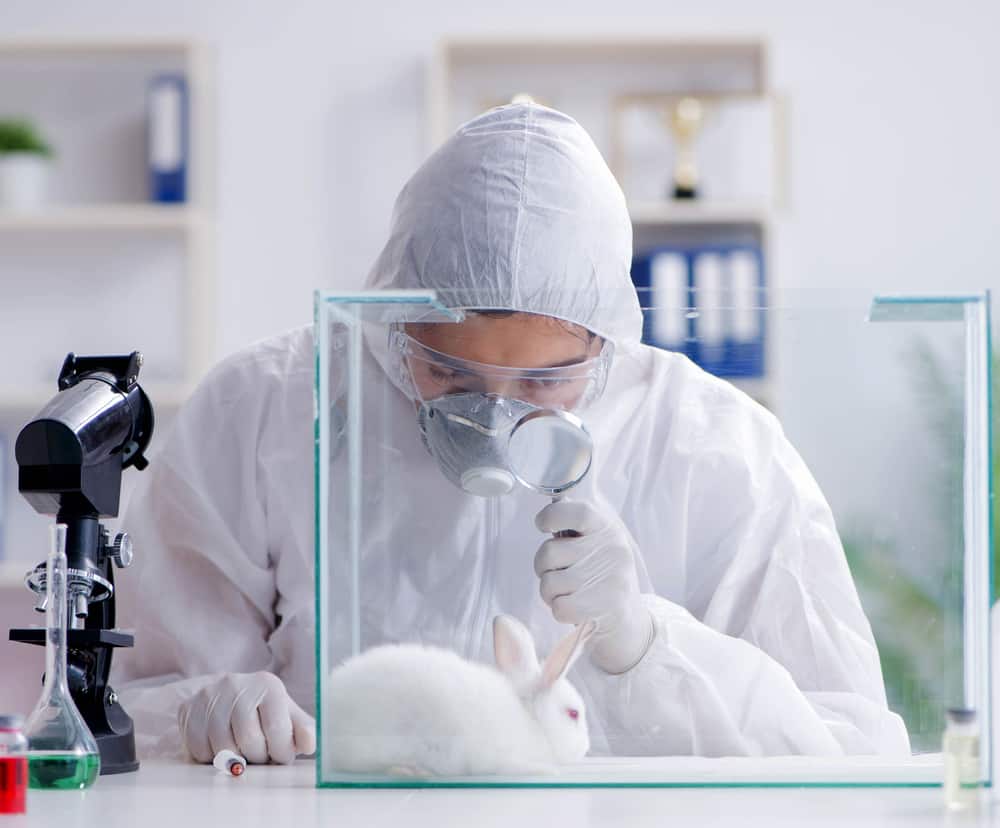Australia is a little behind the rest of the world in the quest to end animal testing. Frequently, these tests are cruel and ruthless to the animals. They are solely performed to expand human understanding or to ensure if products are safe for consumers.
Australia ranks fourth globally for animal testing and typically uses it for educational, biological, or environmental purposes rather than commercial.
The nation recently took a profound step forward by banning cosmetic testing but still has a lot of explaining to do concerning their lack of transparency with animal testing records.
Read on to learn some of the most important facts and statistics regarding animal testing in Australia. It includes their legislature on the subject, how many animals are used, how many procedures are performed, and more.
A Recent Ban on Cosmetic Testing on Animals
Let’s start on a positive note. Australia is making some significant strides to regulate and mitigate animal testing in the nation – and we can see the action it’s taking through its most recent ban.
On July 1, 2020, Australia created a new law that prohibits all cosmetic testing on animals. This means that any ingredients, foreign or domestic, intended for cosmetic products are not legally permitted to be used for animal testing to prove their safety.
To ensure the safety of the public, company workers, and the environment, the details of this ban will align with those already established within the European Union (EU).
Countries within the European Free Trade Association (EFTA), including Switzerland, Norway, Iceland, and Liechtenstein, also align with the EU's approach to cosmetic animal testing.
By eliminating this testing option, companies are forced to find more innovative and humane methods for research to prove their products are safe for human consumers.
Not only will this help decrease the number of animals necessary overall for testing, but it will also help ensure cosmetic products created in Australia or imported into the country are cruelty-free.
This might surprise you, but China is also making strides in this field – yes, China! So, if you are visiting or live in China and want to support cruelty-free cosmetic brands – you can find out everything you need to know here: 9 Interesting Animal Testing Facts in China You Need to Know (2021)
A Nation Very Secretive with Their Animal Testing Figures
One of Australia's most significant issues around animal testing is the country's utter lack of transparency surrounding its testing records.
Most nations keep a record of animals tested within each state/territory or the number of procedures performed. However, Australia differs widely because the nation has absolutely no collection or collation of animal use statistics.
Some states within Australia, such as Victoria and Queensland commonly submit some records over time. However, these reports are frequently delayed and subject to many issues, including inconsistent collection and reporting methods.
Even when data and statistics are acquired from these states/territories, many will have giant holes the state doesn't seem to want to fill in.
For instance, if they have the option to choose a category with a significant gray area, such as "unspecified," they'll opt for it the majority of the time over a clearly specified category. An example of this point is more clearly demonstrated later on.
Not only is it highly questionable that Australia refuses to share its animal statistics with the world – but it creates a great deal of skepticism around what these animals are being used for and to what degree of cruelty they are subjected.
When it comes to animal-testing needed for scientific purposes, it is required that testers comply with the Australian code stated under the Animal Care and Protection Act of 2001. This act depicts a philosophy of animal ethics referred to as the 3Rs meant to ensure an animal's welfare and necessity under any circumstances.
The principles of the 3Rs are:
These R's must be explored to ensure that animal testing is even necessary, and if so, it is conducted in the best manner possible.
Sadly, even though this code is in place, there is no way to truly guarantee companies or educational facilities are even complying with them since many refrain from providing records and documentation of their projects and tests.
Without clear records, there is no way to truly know how many animals Australia uses, the procedures they perform, the purposes of those procedures, and the severity of each animal’s treatment.
What is more frustrating is that a movement within the nation was passed demanding more transparency, yet it had little to no effect. Therefore, one could conclude that Australia will remain somewhat secretive with its records for many years.
The Fourth Largest User of Animal Testing Worldwide
Although this ranking can potentially vary, Australia consistently ranks as the fourth largest user of animal testing worldwide, or, depending on the most recent data used, it sometimes ranks fifth behind Canada.
The top three nations leading this unfortunate category are China, Japan, and the United States. However, it’s important to remember that Australia has the potential to rank much higher than it does at the moment – if the country started reporting all its animal testing actions.
As it stands, it’s hard to find clear statistics of animal testing in Australia that isn't 3+ years old. So, for all we know, the nation could rank first globally, even if they would need to close a significant gap to reach China's figures.
About 21 Million Animals Were Used for Testing in 2017
Finding clear statistics for animal testing in Australia can be difficult. However, we do know that after combining the figures released by Australian states individually in 2017, their ultimate sum was about 21 million animals used for testing.
The individual States figures were as follows:
These animals were used for research or educational purposes. Although 21 million is a horrendous figure, the more astonishing element of this fact is that in the previous year, 2016, the nation only used about 12 million.
This means that the number of animals used for testing nearly doubled in one year. Additionally, these figures only represent five out of all eight Australian states, so there could be millions of animals that are unaccounted for.
The Majority of Projects Focus on Education and Human Understanding
Animal testing is potentially necessary due to the unparalleled insights it can provide over an array of fields.
It is essential to discuss a nation's primary purpose for this controversial method to determine the potential level of cruelty in their tests and what goal the nation is prioritizing (ex. product creation versus general research).
When categorized, the majority of Australia's projects in 2017 fell under five categories:
Other lesser categories included stock breeding, regulatory product testing, and production of biological products – all of which had far fewer figures than those in the top five mentioned above.
It’s safe to conclude that most animals used in Australia are tested for educational, biological, or environmental purposes rather than commercial.
The Majority of Specified Projects Are Strictly Observational
What is arguably more important than the purpose and quantity of animals used for testing is how severely they are treated for projects.
Most countries will follow some form of regulations detailing how much suffering an animal can legally endure during testing. In Australia, the various levels of severity they ascribed to their projects are as follows:
Gratefully, the figures within some of the more disturbing categories, such as "death as an endpoint," are far lesser than those in more acceptable categories such as "minor conscious intervention."
The majority of specified tests fell under the category "Observational studies involving minor interference," with a net total of 3,879,872. Unfortunately, this figure pales compared to those that were "Unspecified," which had an unsettling total of 13,298,741.
Most groups or companies prefer to label their tests as "unspecified" and do not bath the nation in a positive light for animal testing.
Sure, it looks good for Australia that most of its specified tests are under the most humane and least invasive category. Still, it is highly suspicious that so many are "unspecified" and could easily have been placed here, so they didn't contribute to more controversial categories.
Final Thoughts
Animal testing isn't the ideal practice anywhere, but sadly, it is used quite significantly in many nations, and Australia is no exception.
On a positive note, the nation has started to move forward by banning cosmetic testing and shows significant promise since most of their tests are labeled observational for scientific purposes.
However, the statistics supporting this fact mean very little at present due to the nation's lack of transparency regarding their animal testing records.
Until Australia is completely open and thorough with their record-keeping, it's hard to gauge how humanely they use or abuse animals in testing and to what end.


